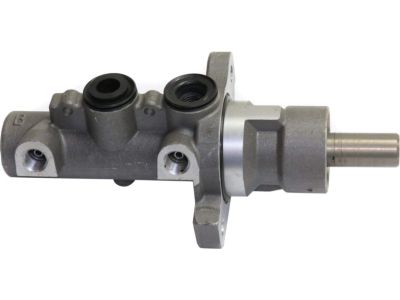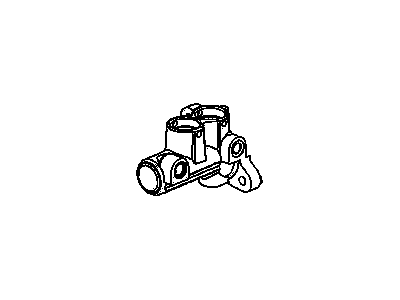
My Garage
My Account
Cart
Genuine Saturn Vue Brake Master Cylinder
- Select Vehicle by Model
- Select Vehicle by VIN
Select Vehicle by Model
orMake
Model
Year
Select Vehicle by VIN
For the most accurate results, select vehicle by your VIN (Vehicle Identification Number).
3 Brake Master Cylinders found
Saturn Vue Cylinder Kit,Brake Master
Part Number: 19151463$85.04 MSRP: $240.49You Save: $155.45 (65%)Ships in 1-2 Business Days
Saturn Vue Brake Master Cylinder
The Brake Master Cylinder of Saturn Vue vehicles is an important part of the braking system where it helps in translating the force exerted by the foot of the driver into hydraulic pressure in order to operate the brake system's slave cylinders. This mechanism works through hydraulic pressure exerted on the hydraulic fluid to make the calipers or drum brakes needed to offer the necessary friction in stopping the vehicle. Generally models of Saturn Vue come with dual circuit master cylinders, and this is because in the case that one circuit has a failure then the other one could supply the braking power. Brake Master Cylinder may also come in different types, some have an integrated fluid reservoir whereby others may have external reservoir made from nylon or plastic. All these configurations may have an implication on maintenance and the possible leakage areas. Some of them are leakage and internal malfunction, which results to reduced braking efficiency. It is critical in the safe operation of the Saturn Vue when the Brake Master Cylinder is inspected routinely.
Each OEM Saturn Vue Brake Master Cylinder we offer is competitively priced and comes with the assurance of the manufacturer's warranty for the part. Furthermore, we guarantee the speedy delivery of your orders right to your doorstep. Our hassle-free return policy is also in place for your peace of mind.
Saturn Vue Brake Master Cylinder Parts Questions & Experts Answers
- Q: How to replace the brake master cylinder on Saturn Vue?A:The Brake Master Cylinder is located in the engine compartment, mounted to the power Brake Booster. Begin by disconnecting the cable from the negative terminal of the battery. Remove as much fluid as possible from the reservoir using a syringe or an old turkey baster. For later models with manual trans axles, disconnect the clutch fluid hose from the Brake Master Cylinder reservoir and plug the line or wrap it with a plastic bag. Place rags under the fluid fittings and prepare caps or plastic bags to cover the ends of the lines once disconnected. Loosen the fittings at the ends of the Brake Lines where they enter the Brake Master Cylinder, using a flare-nut wrench to prevent rounding off the corners. Pull the brake lines slightly away from the Brake Master Cylinder and plug the ends to prevent contamination. Disconnect the electrical connector at the brake fluid level switch on the Brake Master Cylinder reservoir, ensuring to pull back the locking tab before removal, then remove the nuts attaching the Brake Master Cylinder to the power booster and pull the Brake Master Cylinder off the studs. If installing a new Brake Master Cylinder, drive out the two retaining pins that hold the reservoir to the Brake Master Cylinder body and transfer the reservoir to the new Brake Master Cylinder, ensuring to install new seats. Bench bleed the new Brake Master Cylinder before installation by mounting it in a vise and attaching a pair of bleeder tubes to the outlet ports. Fill the reservoir with the recommended brake fluid and slowly push the pistons into the Brake Master Cylinder to expel air into the reservoir, repeating until no more air bubbles are present. Remove the bleed tubes one at a time, install plugs in the open ports, and then install the reservoir cap. Install the Brake Master Cylinder over the studs on the power brake booster and tighten the attaching nuts only finger tight initially, ensuring to install a new O-ring onto the sleeve of the Brake Master Cylinder. Thread the brake line fittings into the Brake Master Cylinder by hand, ensuring they are started straight, and then tighten the mounting nuts to the specified torque before securing the brake line fittings. Connect the brake fluid switch electrical connector and, for models with manual trans axles, connect the fluid hose from the clutch Brake Master Cylinder. Fill the Brake Master Cylinder reservoir with fluid and bleed the cylinder on the vehicle by having an assistant depress the brake pedal and hold it to the floor while loosening the fitting to allow air and fluid to escape, repeating this until the fluid is clear of air bubbles. Finally, test the operation of the brake system carefully before placing the vehicle into normal service.






